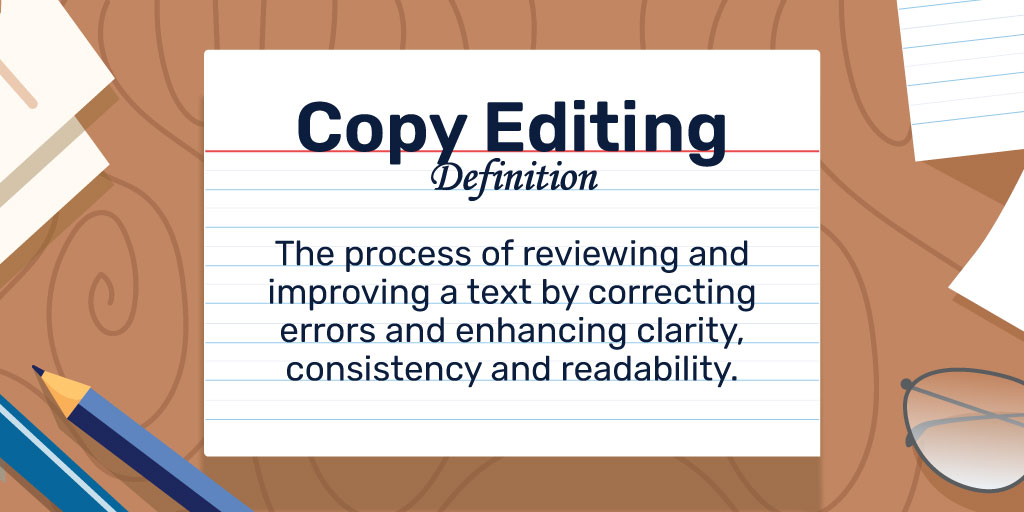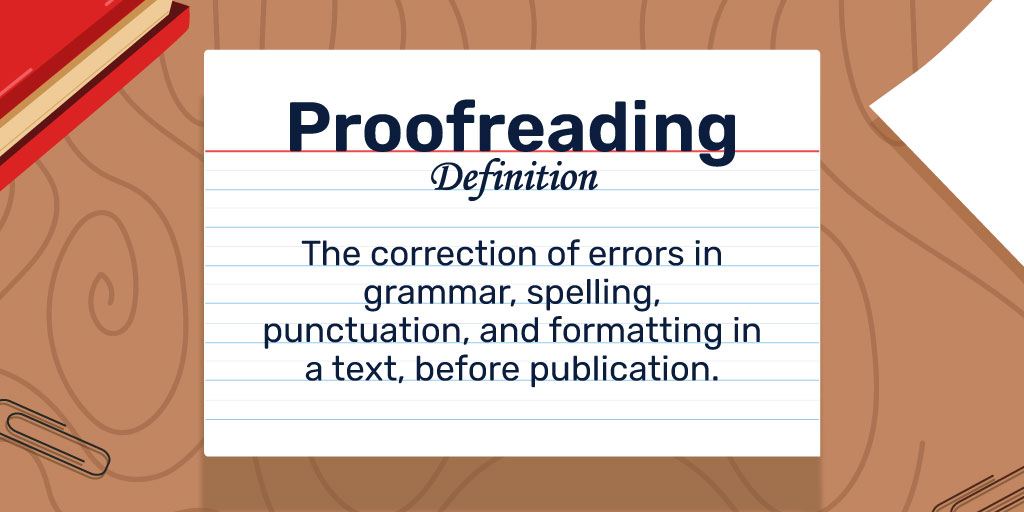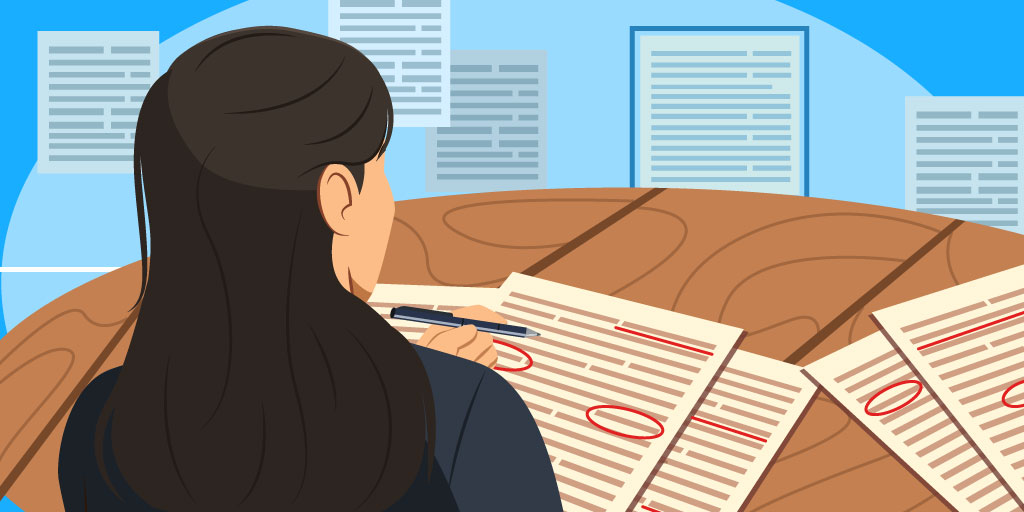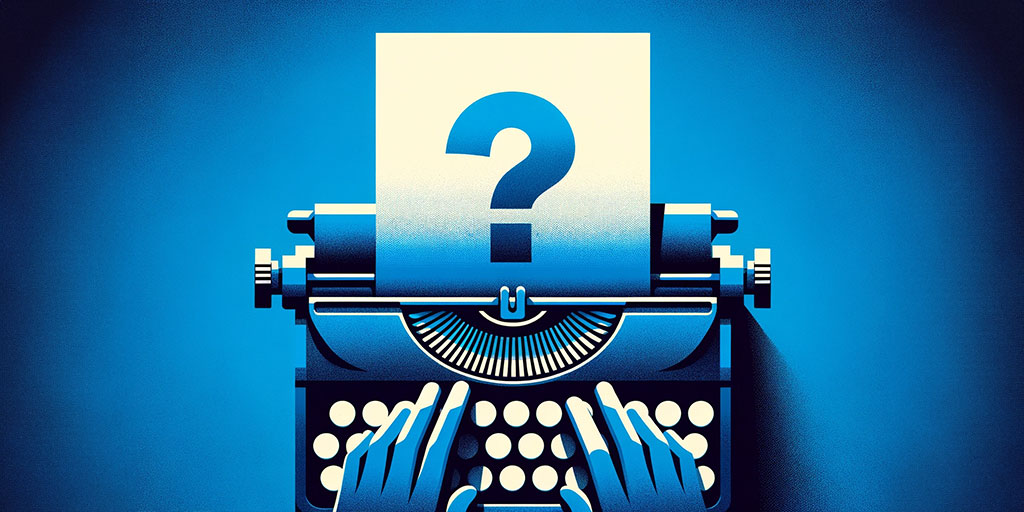Copy editing and proofreading both Unleash the Power of Precision on your work, ensuring that your words and sentences are tidy and broadcast the message you intend them to do. Both are crucial stages in the editorial process, but they involve different levels of scrutiny and focus on distinct aspects of a written work.
In this guide, we will explore the differences between copy editing and proofreading. We’ll also help you figure out which one you need and provide guidance on how to become a professional in either field. Get ready to learn how to polish your writing like a pro!
What is Copy Editing?

Copy editing is a careful and thorough process of reviewing and revising a written work to ensure its accuracy, clarity, coherence, consistency, and overall quality. It involves digging into the content at a deep level to enhance the readability and effectiveness of the text.
It typically takes place after the author has performed their own editing of the material. Copy editing goes far beyond grammar and spell-checking. It also focuses on improving elements like style, organization, and factual accuracy.
Scope of Work of Copy Editing

Let’s explore in more detail the extensive range of tasks involved in this editorial process, from refining grammar and style to verifying factual accuracy and enhancing overall readability.
- Style and consistency: Establish and maintain a consistent writing style and ensure that the document follows style guides uniformly throughout.
- Clarity and readability: Improve the overall clarity and coherence of the content by streamlining complicated sentences and enhancing the way ideas flow.
- Removing ambiguity: Identify and clarify any statements or phrases that are unclear or ambiguous in the text.
- Fact-checking: Verify the accuracy of the information in the document, including the dates, names, statistics, and other facts.
- Structure and organization: Examine the logical flow of the content, rearrange paragraphs if necessary, and strengthen transitions between sections.
- Language and tone: Adapt the wording and tone to the intended readership and goal of the document.
- Consistency in citations: Verify the accuracy and compliance with the chosen citation style of all references, footnotes, endnotes, and citations.
- Formatting and layout: Ensure consistent formatting, such as headings, subheadings, bullet points, numbering, and overall visual presentation.
- Grammar, spelling, and punctuation: Correct errors in grammar, ensuring accurate spelling, and proper usage of punctuation marks.
Examples of Copy Editing
As an example of the work copy editors do, look at the following paragraph from Dean Koontz’s Strangers n raw and copy-edited form:
Original Version:
“Dominick Corvaisis went to sleep under a light wool blanket and a crisp white sheet, sprawled alone in his bed, but he woke elsewhere-in the darkness at the back of the large foyer closet, behind concealing coats and jackets. He was curled in the fetal position. His hands were squeezed into tight fists. The muscles in his neck and arms ached from the tension of a bad though unremembered dream.”
Edited Version:
“Dominick Corvaisis fell asleep under a light wool blanket and a clean white sheet, comfortably sprawled in his bed. However, when he woke up, he found himself in a different place – in the darkness, tucked away at the back of a big closet in the foyer. He was curled up in a ball, with his hands clenched tightly into fists. His neck and arm muscles were sore from the tension caused by a disturbing dream that he couldn’t recall.”
Craft of Writing Quiz (Easy)

What is Proofreading?

Proofreading is the last careful check before something gets published. It involves reading the material carefully to find and fix mistakes and inconsistencies that might have been missed during earlier edits. It’s all about making sure everything looks good and makes sense before it’s officially out there for everyone to see.
It is often based on a proof copy printed by the publisher before the final publication. During proofreading, the focus is primarily on the accuracy of grammar, spelling, punctuation, and formatting.
The aim is the final polish and refinement of a written work, rather than substantial changes to the content or structure. It aims to eliminate any remaining errors or inconsistencies that could detract from the professionalism and credibility of the document.
Scope of Work of Proofreading

Below, we will describe the range of tasks encompassed within the proofreading stage, from scrutinizing grammar and spelling to ensuring consistency and polishing the document’s visual presentation.
- Grammar: Check for errors in grammar, including subject-verb agreement, verb tenses, sentence structure, and usage of pronouns.
- Spelling: Verify the correct spelling of words and ensure that there are no misspelled words throughout the document.
- Punctuation: Review the proper usage of punctuation marks such as commas, periods, semicolons, colons, quotation marks, and apostrophes.
- Capitalization: Ensure consistent and appropriate capitalization of words, including proper nouns, titles, headings, and acronyms.
- Formatting: Check for consistency in formatting, such as font styles, font sizes, indentation, paragraph spacing, and alignment.
- Typographical errors: Identify and correct typographical errors, including transposed or missing letters, extra spaces, or incorrect characters.
- Consistency: Ensure consistency in language usage, terminology, abbreviations, acronyms, and formatting throughout the document.
- Cross-references: Verify the accuracy and consistency of cross-references, such as page numbers, figures, tables, and citations.
- Spacing and alignment: Check for proper spacing between words, sentences, and paragraphs, as well as align text and visual elements correctly.
Examples of Proofreading
As an example of the work proofreaders do, look at the following paragraph from Lisa Gardner’s The Perfect Husband in a raw and proofread form:
Original Version:
“Now she remembered the feel of her finger tightening around the trigger. The pul of the trigger, the jerk of the trigger, the roar of the gun and the wringing in her ears. The acrid smell of gunpowder, and the hoarse sound of Jim’s cry. The thud of his body falling down. The raw sent of fresh blood pooling on her carpet.”
Proofread Version:
“Now she remembered the feel of her finger tightening around the trigger. The pull of the trigger, the jerk of the trigger, the roar of the gun, and the ringing in her ears. The acrid smell of gunpowder and the hoarse sound of Jim’s cry. The thud of his body falling down. The raw scent of fresh blood pooling on her carpet.”
Copy Editing vs. Proofreading
The main differences between Copy Editing and Proofreading lie in their depth of review, the scope of their changes, and their timing in the editing process. Regarding their depth of review, copy editing involves a comprehensive review of the content, including its clarity, organization, and factual accuracy. Proofreading, on the other hand, is a final, surface-level review that primarily focuses on identifying and correcting errors in grammar, spelling, punctuation, formatting, and typographical errors.
Copy editors may suggest substantial changes, such as rephrasing sentences, improving clarity and flow, restructuring paragraphs, and addressing inconsistencies. Proofreaders, on the contrary, primarily address surface-level errors and inconsistencies, making minor corrections to grammar, spelling, punctuation, and formatting.

Copy editing typically occurs before proofreading and serves as an intermediate stage in the editing process. It is conducted after the initial draft is complete, refining the content before the final proofreading stage. Proofreading, on the other hand, is the final stage of the editing process, taking place after copy editing. It ensures that the document is error-free and ready for publication.
Beyond these differences, both processes attend to grammar, spelling, punctuation, and formatting, and it is the objective of both to enhance the quality and professionalism of the written work. The following overview summarizes the key differences between copy editing and proofreading:
Aspect | Copy Editing | Proofreading |
|---|---|---|
Main focus | Grammar, style, clarity, organization, factual accuracy | Grammar, spelling, punctuation, formatting, typographical errors |
Stage in writing process | Intermediate stage, after author’s editing | Final stage, after copy editing |
Time required | Moderate, possibly weeks | Shorter, possibly days or one week |
Depth of review | In-depth review, addressing content and structural changes | Surface-level review, focusing on errors and inconsistencies |
Scope of changes | Substantial changes, restructuring, and content refinement | Minor corrections, primarily addressing errors and inconsistencies |
Collaboration with authors | Collaborate to refine content and maintain voice | Collaborate to clarify ambiguities |
Impact on document quality | Enhances overall quality and effectiveness of the content | Ensures accuracy and polished presentation before publication |
How to Become a Copy Editor or Proofreader?

If you want to become a professional copy editor or proofreader, there are some fundamental steps that can lead you to both careers:
1. Develop Strong Language Skills
Enhance your knowledge of grammar, punctuation, spelling, and vocabulary. Read extensively to improve your understanding of language usage, styles of writing, and tone in different genres.
In both careers, you will be in a position to have to catch linguistic errors and inconsistencies, which you cannot do if you aren’t a serious language wiz.
You will also have to familiarize yourself with style guides, such as the Chicago Manual of Style, Associated Press Stylebook, or Oxford Style Manual, or at least have them on your bookshelf to use when you need them. Understanding and applying consistent style guidelines is crucial both in copy editing and proofreading.
2. Acquire Relevant Training
While not always mandatory, having a bachelor’s degree in English, journalism, communication, or a related field can provide a strong foundation. If you lack the time and/or money for a degree, consider pursuing courses in editing or proofreading to gain specialized knowledge.
Many universities or colleges offer short courses offline or online on platforms like Coursera or Udemy. UK Writers College offers a copy editing and proofreading course, where you can do it all in one, and The Publishing Training Centre runs a training program on the copy editing process, including on how to prepare documents for publication. Skillshare also offers many free courses at different quality levels, but make sure that it comes with a certificate so you can prove that you’ve completed it.
3. Develop Technical Skills
Familiarize yourself with word processing software such as Microsoft Word and Google Docs. Learn how to use tools like track changes, commenting features, spell- and grammar-checking, and formatting styles.
Many employers will require you to work in word processing software, because it is more efficient and accurate. They also allow for direct collaboration with the author. Track changes allows editors to suggest and implement revisions while maintaining a clear record of all modifications made to the document. Comments provide a convenient way to communicate with authors and discuss specific changes or queries.
The use of technology will also allow you to work remotely from any location and flexibly at any time, which makes it an essential tool to master.
4. Gain Practical Experience
Seek opportunities to gain hands-on experience in copy editing or proofreading.
Offer your services to websites, local organizations or charities to help with communication texts, local publications like small newspapers, or student organizations. Even if these jobs don’t pay, they will help you to build a portfolio of work.
The Society for Editors and Proofreaders is an organization that offers editorial services to organizations and publishers. They use volunteers to do the work and give training and credibility in exchange for your effort.
5. Assemble a Portfolio
Put together a professional portfolio of your work that showcases your copy editing or proofreading skills. If you are a proofreader, include samples of work that demonstrate your ability to identify and correct errors in grammar, spelling, punctuation, and formatting.
If you are a copy editor, put together samples that display a flare at cleaning up muddled sentences, correcting inaccurate information, and fixing up grammar and spelling.
A good portfolio requires that you include raw and edited copies of the work you have done to demonstrate your skills.
6. Network within the Industry
Attend industry events, join professional organizations or groups, and connect with other proofreaders or editors. Networking can provide valuable insights, job opportunities, and mentorship.
Consider signing up for a professional association for copy editors and proofreaders such as the Editorial Freelancers Association or the Society for Editing, both of which provide support, link editors and proofreaders with each other, and post jobs on their job boards for which their members can apply.
7. Apply for Your First Position
Once you’re done with your portfolio and you are ready to start working properly, start to search for freelance and entry-level editing and proofreading positions.
You can find paid freelance jobs on boards like Upwork and Indeed that may not pay much, but that will serve as valuable experience.
Send your resume and portfolio to publishing houses, editing agencies, content marketing firms, websites, public relations agencies, and any other organizations that produce written content.
The Society for Editing, American Society of Magazine Editors, Publishing Professionals Network, JournalismJobs.com, and Media Bistro are all good places to start.
Frequently Asked Questions
In this section, we aim to shed light on common queries surrounding the distinction between copy editing and proofreading, providing concise answers to help you grasp the nature of these two essential editorial processes.
What Are the Types of Copy Editing?
There are potentially many types, but the main forms are:
- Substantive or line editing: Check for coherence and flow of contents.
- Stylistic editing: Improve tone, voice, and readability.
- Mechanical editing: Repair grammar, spelling, punctuation, style guidelines, etc.
- Fact-checking editing: Check the accuracy of facts, names, and statistics.
- Academic editing: Verify adherence to academic conventions and referencing style.
What Are the Three Levels of Copy Editing?
The three levels of copy editing indicate varying degrees of thoroughness and intensity in the editing process. Each level focuses on different aspects and entails different tasks.
- Light copy editing: Correct grammar, spelling, punctuation, and formatting.
- Medium copy editing: Light copy editing, plus fix up unclear sentences and poor word choices.
- Heavy copy editing: Light and medium copy editing, plus restructure pages and paragraphs to improve clarity, logical flow, and coherence.
What Are the Cs of Copy Editing?
The “Cs of Copy Editing” is a mnemonic device used to highlight different areas of focus in the copy editing process. While the specific words associated with each “C” may vary, a common breakdown is clarity, consistency, correctness, completeness, conciseness, coherence, and consideration of the audience.
What Are the Common Problems in Copy Editing?
In copy editing, several common problems can arise that need to be addressed. They include grammar and syntax errors, spelling mistakes, inconsistent language usage, ambiguity, lack of clarity, poor structure, inaccurate information, inconsistency in formatting or style, weak transitions between paragraphs and sections, and lack of attention to the target audience.
What Are the Three Types of Proofreading?
The three types of proofreading can vary depending on the context and industry, but here are three commonly recognized types:
- Traditional proofreading: Correct errors in grammar, spelling, punctuation, and formatting.
- Comparative proofreading: Compare different versions of a document with each other for consistency.
- Electronic proofreading: Review an electronic text on the screen and make the changes directly in it.
What is the Main Purpose of Proofreading?
The main purpose of proofreading is to meticulously review written material, identifying and correcting errors in grammar, spelling, punctuation, formatting, and typographical mistakes. The ultimate goal is to ensure the document is accurate, polished, and free from any language or mechanical errors before it is published.
Is Proofreading a Form of Editing?
Yes, proofreading is considered a form of editing. While editing encompasses a broader range of tasks that also include refining and improving a written document, proofreading specifically focuses on polishing its grammar, spelling, punctuation, and formatting directly before it is published.
Why is It Called Proofreading?
The term “proofreading” originates from the traditional practice of reviewing the proof copies of printed materials before final publication. After the typesetting process, a “proof” is created to identify any errors, make necessary corrections, and ensure the accuracy and quality of the final printed product. The individuals responsible for this task are known as proofreaders.
Can the Same Person Do Copy Editing and Proofreading?
Yes, it is common for the same person to perform both copy editing and proofreading tasks, especially in smaller organizations or for smaller projects. Many copy editors possess the skills and knowledge to handle both editing stages effectively.
Final Thoughts
Understanding the difference between copy editing and proofreading is crucial for anyone involved in the writing and editing process. While both stages play essential roles in refining written material, copy editing focuses on content, clarity, and organization, while proofreading hones in on surface-level errors.
By recognizing and leveraging the unique strengths of each, writers and editors can ensure that their work is polished, accurate, and ready to make a lasting impact.
Craft of Writing Quiz (Hard)








